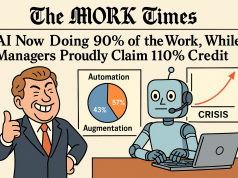[ad_1]
Introduction
This article looks at the basic considerations for any team leader/manager implementing the switch to flexible/remote working teams.
Staff Suitability
Teams which tend to fit easily into the remote worker/team mould have the following common characteristics
– They are either knowledge workers or back office admin staff
– They approach their work in a mature, disciplined and self motivated way.
– Their work is task/project focused in nature. This is important so that you as a manager can you measure actual against expected performance reliably.
The thing you need to be aware of is that not everyone is capable of adapting to
remote working. Where commercial constraints require a retail focus or a client side sales focus home working can be used as a staging point/temporary base for admin purposes – but cannot be even considered as a full time place of employment for staff.
Remember: Providing the wrong facilities to employees can be very costly to your business. Staff resources are, and will continue to be your most important and most expensive asset – use them wisely.
Here are several team organisational structures which we have found to be particularly successful:
o Where a collaboration framework is institutionalised within the business process – for example a group of sales staff accessing the same central CRM data, or a team of claims processors accessing a knowledge base of historical claims information, or a team of customer representatives working a call centre operation. In these environments – each remote worker becomes responsible for the carrying out of specific actions relating to individual ‘incidents’ that occur in real time – following a known and clearly documented process.
o Where each member of the team has an array of specialist skills and team objectives are geared so as to assemble teams to do individual projects which are then disassembled and rebuild for the next project. This approach can be considered ‘themes not teams’ in organisational composition and lends itself to groups who do not focus on a specific recurring business process, but instead on support of innovation centred work.
Organising the work
For a remote team to be effective needs all the key components which make successful team working environments in traditional offices – but getting them in place and then subsequently supporting them does require more effort from you – the team leader…
From our experience, these boil down to the following
Communication
Members of the team need to be able to contact each other and communicate freely with their peer throughout the day. This aspect is available without effort in a traditional office based environment but requires technology investment and infrastructure expertise to get right in a remote team setting. With the advent of VOIP (internet based phone services), the cost to the company of providing these services to remote workers is reduced to as little as providing an internet connection to them.
Human beings are – by their very nature, sociable pack animals, requiring social contact in order to remain motivated and creative. Physical contact between team members should take a high priority in the way that the team is organised. As well as addressing these basic needs, regular focused meetings are key to the growth of an inter-dependent, supportive team. From experience – meeting as a team once a month provides a successful convention and at least a day a week should be set aside for impromptu of official meetings between team members as/when they are required.
Collaboration
It is key for performance in a remote team to place emphasis on team work and make as many of the information based resources used by the team at their disposal in a collaborative environment. I would urge that companies adopt centralised document management – collaborative white-boarding and networked CRM solutions and endeavour to provide training to staff in these tools and encourage adoption.
Control
As team manager, you need to be able to track progress of ongoing work against both the expectations of your superiors regarding your team and also in terms of progress on assigned work on a task by task basis.
Unless, as a remote team manager you want to be swamped with information continuously (what we call email-blindness), delegation of low level task detail to individual resources is a necessity. I would also urge that a project planning tool is deployed by you and the team members are given a chance to buy-in and determine action plans with you. As well as making your workload as team leader more manageable – this technique also empowers team members – promoting the growth of skills and fusing the team with mutual appreciation of other team member’s strengths and abilities.
In reality you are running with two views of the project plan at all times – a strategic plan used by you for medium/long term planning and to provide high level information on progress vs. a more tactical task oriented view which has been drawn up in conjunction with team members and which – to a large extent you have given them responsibility for managing)
In Summary:
Much research has been placed recently into demonstrating the clear improvements in team efficiency and productivity which can be achieved through effective use of remote team working practices, and our organisation – running in this way very successfully since its start in this manner is a great example. However the decision to provide flexible and remote working facilities to staff should not be taken lightly and the operational changes require careful planning and operational commitment in order to be successful.




























